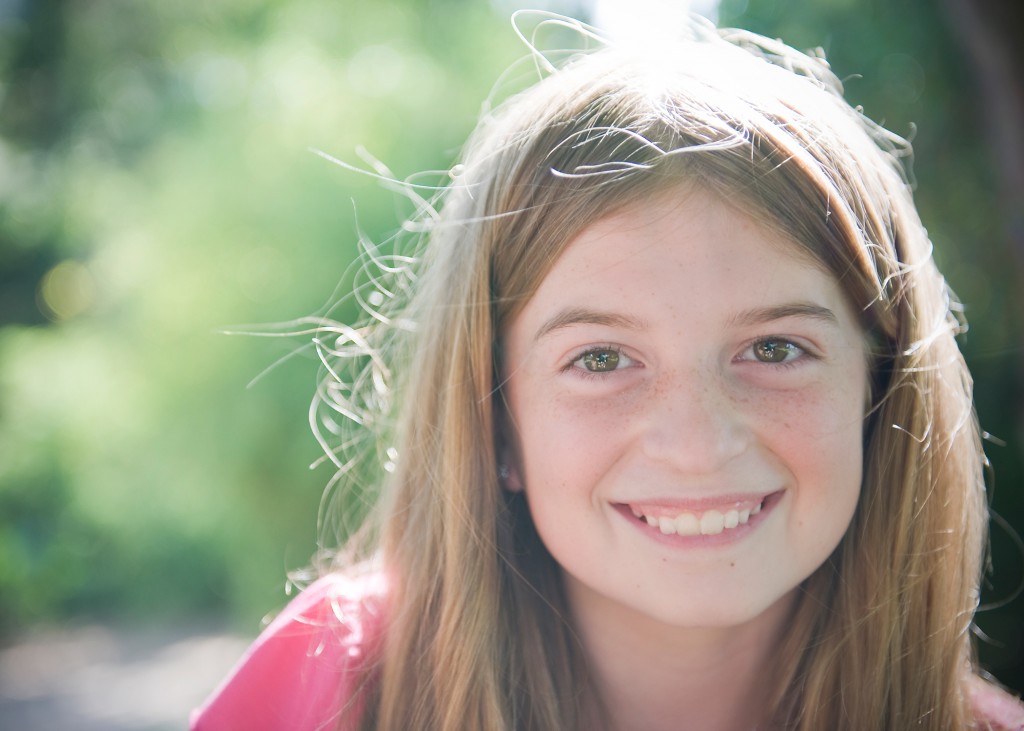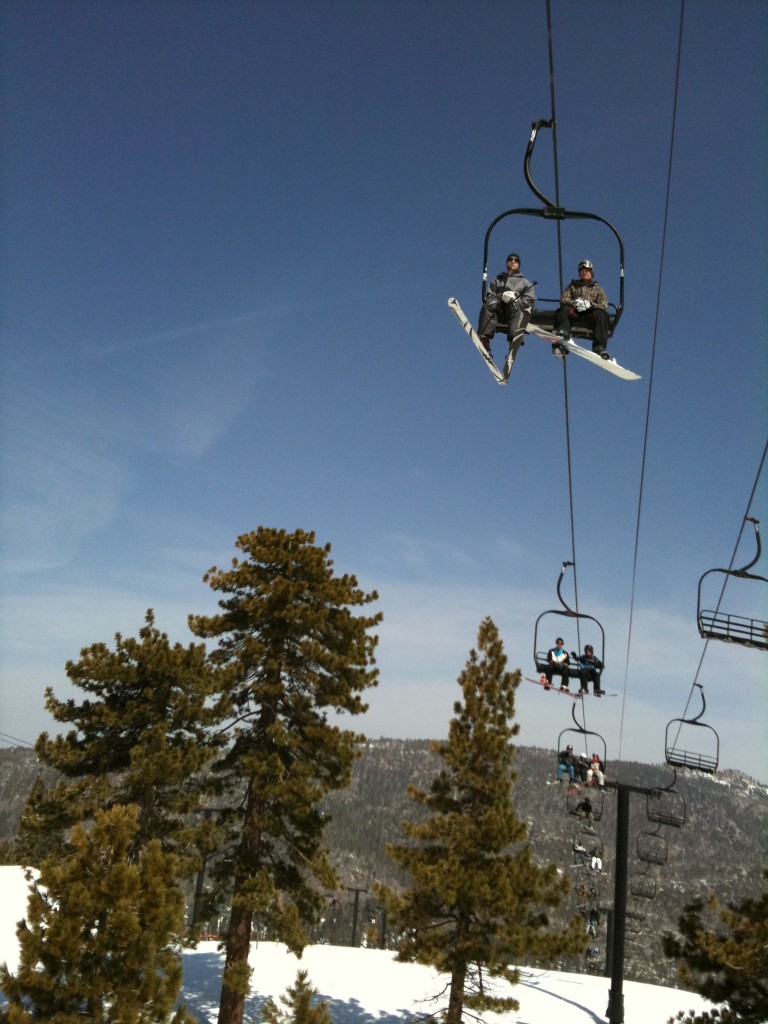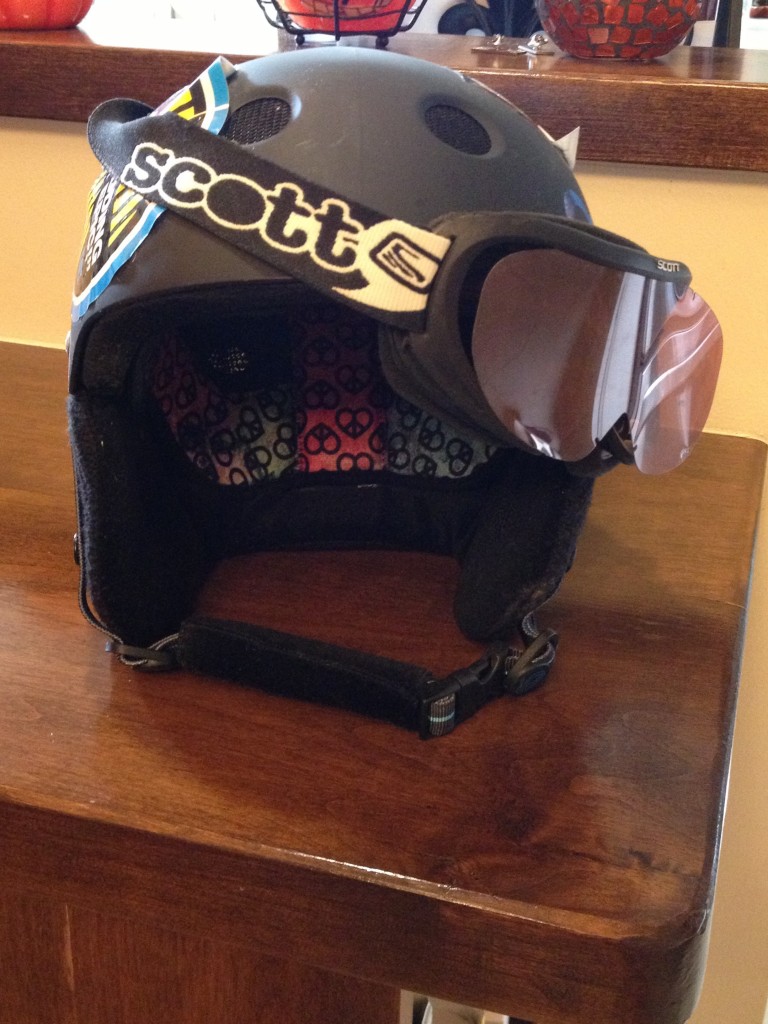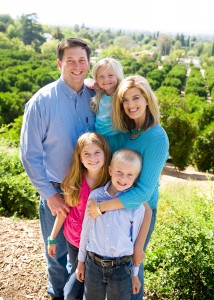Thankful to celebrate Keely’s 11th birthday with her today. Thankful for the Ski Patrol, the San Bernardino County Sheriff’s helicopter crew and the staff of Loma Linda Children’s Hospital who made it possible to celebrate. Thank you is not enough.
Category Archives: Ski
Gaining Traction
I’ve been told that the safety bar discussion is gaining traction nationally. We should see an educational push supported by the National Ski Areas Association and the California Ski Industry Association enacted perhaps as early as this season. The “Kids on Lifts” program includes loading guidelines and kid-friendly seat targets. I would love if you would let me know if you notice increased chairlift safety programs at your local resorts.
I can’t tell you how thrilled this makes our family. We look forward to the day that the ANSI B77 standards are updated to include safety restraints on chairlifts.
To Wear or Not to Wear a Helmet
Upon reading my Twitter feed yesterday I came across @BraveSkiMom‘s post about Kids Safety and Ski Helmets. It made me think of our family’s own practice. Prior to having children my husband and I never wore ski helmets. The ski season after our first child was born we became avid wearers not only to set an example of proper protection but also because it made sense to us at that point. It made sense to preserve ourselves to be able to continue raising our children. Besides once you wear a helmet you realize there is no better wind barrier and the helmet does an excellent job insulating your head against frigid temperatures.
Having worn helmets their entire skiing lives the act of wearing a helmet is second nature to the kids. They know nothing different. And, thus, the attire of skiing changed in a generation.
That the helmet remains a safety device left up to individual choice in most states is fine by me. That some choose not to wear a helmet is between them and their own luck, I think. I truly understand that “freedom to fly” argument presented by many that hit the slopes.
I bring this up to point out only that the individual choice to use a safety device such as a bar restraint on a ski lift does not exist in many places. Patrons of ski resorts do not have the ability to bring up individual bar restraints to use as they wish as they do helmets. If they did perhaps our family would not have had to experience the tragic accident we did (if an individual lift restraint was even plausible).
Thus, we truly hope that the installation of ski lift restraints becomes a universal industry standard in the near future. A restraint for the individual resort patron to use or not use- this between them and their own luck. This luck is pressed when the patron is a child sitting on a bench that does not properly fit their femurs, etc.
Despite educating our black-diamond skiing daughter on how to safely sit on a ski lift, luck was not on her side when she fell 32 feet in April of 2010. Or perhaps luck was there in that she was wearing a helmet that protected her head and goggles that protected her face. In another post I will talk more of the other lucky coincidences that occurred that day.
Here is the picture of Keely’s helmet and goggles that more than likely saved her from massive head trauma that would have surely resulted from her 32 foot fall. These sit on her trophy shelf now… we bought her new items for the following ski season. You’ll note that the goggle lense popped out- correctly designed to not shatter.
Gaining Support
My last entry regarding our push to change ski lift standards talked of our efforts for legislative change. In August of 2011 I submitted our proposed Keely’s Law to the office of Assemblyman Morrell and assumed change was on its way.
Ski season started and the Sugar Bowl fall with resulting fatality of a seven year old was reported. We had wrongly assumed that our draft bill would provide notice of dangers and prevent these types of accidents from occurring. I followed up with Morrell’s staff and was advised they would not be pushing our bill through as their priorities were economic related bills and transparency though they would look at co-sponsoring a bill if we could find another legislator to push it through.
And the rose-colored glasses that somehow have found a permanent place on my head were yet again fogged over. We quickly attempted to find another local politician to assist. Though meeting with wonderful staff members and gathering advice, campaigning and the realities of party politics in our state were obstacles.
So we reached out to consumer and industry groups and were embraced by both. The first to respond was the California Ski and Snowboard Safety Organization (CSSSO). At a time when we were feeling all alone in our efforts we were told, “You are NOT alone.” This meant so very much. They offered research tools along with the SnowSport Safety Foundation and networking with Northern California legislators and media with a history of advocating for safety requirements in winter sports. This time we acted trepidly in our push for a legislative change as we realized that perhaps that might not be the best approach when shooting right out of the gate.
With legislative assistance on hold we met with the California Ski Industry Association. Craig, Keely and I sat at a table and presented our case. Our introduction? We are a skiing family and love the resorts. Families are big business for resorts. How can we make it safer for the children and prevent another family from experiencing what we and many others have gone through because of ski lifts that don’t properly fit a child? How can we have a positive impact on families and resorts?
The meeting solidified our desire to create an industry change in ski lift safety through an industry standards change as who better to study, analyze, update a safety standard than those within the industry itself? The California Ski Industry Association agreed.
While seeking a change all agree that the education of proper loading of children on ski lifts should be emphasized to resort employees and patrons. “Back to Back” needs to be a mantra. Though a child with his/her back sitting against the back of a lift chair is quite uncomfortable with the weight of their ski equipment making riding up a difficult experience since their knees do not bend at the end of the bench like an adult causing their legs to stick straight out; and further that they can’t quite scoot back until they are already lifted at a height allowing for the back tip of their skis to not hit the ground below- all this is a necessary precaution pending restraining devices that would assist the safe transporting of children up a ski hill.
Keely’s Law (Draft)
Existing law imposes regulations on certain facilities that are used for recreational activities including skateboard parks and public swimming pools.
The purpose of this bill is to provide reasonable safety standards for the design, construction and operation of passenger tramways used in skiing. Implementation of the bill will provide greater safety for the public at ski lifts in that the rule is abreast of current developments in the field.
This bill would set a deadline for California ski resorts to install restraint bars on all chairlifts. It would allow a tax credit for resort purchases made for installing, improving, or replacing restraint bars on all existing chairlifts.
In addition to the tax incentive this is a job creation bill due to a then prerequisite need for the manufacture and installation of such chairs in California’s mountain communities.
A third incentive is to insure the safety of California’s citizens and visitors participating in recreational activities with no means for directing the mode of transportation in performance of that activity. This bill would provide personal discretion for a ski resort patron to account for their own safety in utilization of an elevated ski lift.
The bill would specify that nothing in the above-described provisions shall be construed to change the existing assumption of risk doctrine as it applies to ski resorts. The people of California and specifically those utilizing ski resort chairlifts maintain sole discretion to use the restraint bars installed.
Existing Law:
Currently, there is no requirement in California for deployed safety bars on chair lifts. California Labor Code Sec. 7340 et. seq. California Code of Regulations Sec. 3150 et. seq. And see California Mountain Resort Safety Report, p. 17, www.snowsportsafetyfoundation.org. Cal- OSHA has jurisdiction over chairlifts as they are considered aerial passenger tramways. However, ski resorts are not deemed “common carriers” and have no duties as such according to California Public Utilities Code section 212(c).
Comments:
To add to Chapter 4 of the California Code of Regulations Subchapter 6.1 Article 1 Sec. 3150 regarding Passenger Tramway Safety Orders.
California can proudly claim some of America’s best downhill skiing resorts. However, as the snow sport industry and associated risks have changed over the years, California public policy has not kept pace. Most of California’s ski resorts are located on federal land, subjecting them to the jurisdiction of the U.S. Forest Service. The Service takes a “hands off” approach to safety regulation and rarely mandates rules or requires improvements be made (See SB 105 Analysis as prepared by Drew Liebert & Nicholas Lidtke/JUD.). Consequently, California snow sport facilities have significant latitude as to when, how and whether safety and accident prevention procedures and methods are employed. Additionally, all ski resorts in California enjoy liability protection under California’s “primary assumption of risk” doctrine which shifts liability from the resort to the skier for any injury suffered as a result of normal athletic activity. Furthermore, contractual waivers associated with lift ticket purchases give resorts added liability protection.
Unfortunately, numerous accidents occur throughout the United States every year at ski resorts where individuals, including minors, fall out of these lift chairs (a cursory search via Google or YouTube provides numerous examples). At most ski resorts, safety bars are not required, and the chairs are designed for adult frames not for minors (Patron Safety at California Snow Sport Facilities, p. 5, www.snowsportsafetyfoundation.org). Presently, a chairlift patron has no means to combat safety concerns of riding an elevated mode of transportation in inclement weather, congested conditions or of speed in the pursuit of a popular winter sport activity. Skiers should not have to bear risks they have no ability or right to control.
The ski resort landscape has been transformed by the introduction of high-capacity lifts and changes in skier demographics due to direct marketing and specialized venues encouraging bigger jumping, citizen racing, children’s discovery parks, etc. (Patron Safety at California Snow Sport Facilities, p. 1, www.snowsportsafetyfoundation.org). The goal for most large ski resorts is to attract as many customers as possible and move them up the mountain as quickly as possible. To this end, resorts have introduced high-speed lifts that carry up to six people per chair and move at 1,000 feet per minute contributing to the inevitable crowding on the slopes. It must be pointed out that thousands of people buy lift tickets every day throughout the season, thousands of people ride lifts, buy services and ski the trails (an all time industry record of 60.4 million skiers/snowboarders was set during the 2010-2011 season (Ski Industry Sets All Time Record: Tops 60 Million, Altschul, 7/15/2011, www.onthesnow.com). Each ticket sale may be, for some purposes, a purely private transaction. But when a substantial number of such sales take place as a result of the seller’s general invitation to the public to utilize the facilities and services, a legitimate public interest arises. In persuasion see Dalury v. S-K-I Ltd., 94-236, 164 Vt 329; 670 A.2d 795 (1995).
By requiring restraint bars on chairlifts this bill seeks to provide the ski resort patron the ability to make an individual choice that is presently nonexistent for utilization of safety measures but does not alter the liability protections ski resorts currently enjoy. In passing this bill, California will join a list of ski states already implementing mandatory installation of restraint bars on all chairlifts. Vermont1 and New York2 have already passed mandatory installation of safety bars on all chairlifts in their own states.
The application of the improved rules presents no hardship to the ski lift industry and should provide economic advantage to the public and the operators and owners of ski lifts by reducing expensive injuries.
Though compliance with the rules does impose some minimal expense (although not easily or readily quantifiable in terms of dollars) on the owners or operators of ski lifts, this expense is far outweighed by the positive results for the owners or operators of ski lifts and the public.
1Each chair shall be equipped with a restraint bar, which shall not yield to forward pressure applied by passenger(s). The passenger(s) must have the restraint bar fully closed except when they are embarking or disembarking the lift. Vermont Passenger Tramway Rules 1007.2.
2 Each chair shall be equipped with a restraining device referred to as a restraint bar that will not open under forward pressure (NYCRR Part 32, 4.34(d). And see Id. At 3.33(d)(4) (For aerial lifts operating primarily for foot passengers, each chair shall be equipped with a restraining device that will not operate under forward pressure.).
Our Initial Efforts
Since our local Assemblyman Mike Morrell responded to Keely’s letters seeking ski lift safety requirements we decided to start our efforts of change with him. It seemed logical to us to start with a politician as wouldn’t he have connections and ability to direct efforts or at least send us to someone who could? And I sincerely hoped that once the ball got rolling for change that the nightmares I have during ski season would cease- those nightmares that we are not doing enough to prevent another family from experiencing what we experienced. It is unfortunate that our eyes are now wide open.
Gearing up for the meeting in June of 2011 I decided to research ski lift accidents, standards and regulations. This was quite difficult not only because there is little information required to be reported and little in the way of regulations in this area, but it required me to be constantly focused on the accident that almost took Keely from us. Many times it seemed like looking for that needle in a haystack for who were we even try to present our persuasions. The US Forest Service? The State? The Counties? Those bodies in charge of maintenance and safety like CalOSHA? The Ski Industry? My optimistic self assumed that the politician would be all-knowing and tell us exactly that answer or better yet just take our idea and run like the wind with it. Your laughter is acknowledged. And here’s a visual to accompany that laughter- we took the entire family including the two year old to our first meeting with a politician as this was a big deal for us.
I am so ever thankful for that first meeting as Assemblyman Morrell was indeed helpful in helping us to focus on what it was we truly sought. We don’t want to impede on the individual’s choice nor impose requirements on the industry that would not be business friendly (we love the ski industry as we are a skiing family). He helped us to outline our argument and then sent us on our way to actually write a draft of the legislation we sought.
After three months of research in preparation of our meeting including a powerpoint presentation whose background music alone took me two months to choose (Clint Mansell’s “Lux Aeterna” depicts exactly how it feels as a parent to watch your child on life support) I now had until the first week of August 2011 to submit a proposed Bill to Morrell’s office. As a layperson how exactly is that written? We had assumed that was the purpose of a legislative staff. To this day I have no idea if what I drafted is anywhere close to what was typical and will post for your analysis.
Craig looked at me as we walked out of the meeting. I said, “Craig this could be huge. This would be industry altering.” He looked at me and replied, “Go big or go home.” We both agreed there is a need to focus on children’s safety in the sport of skiing and, thus, the ball began to roll.
It hasn’t always been a straight path but it seems as if all is happening as it should. The need to gather support will be a future installment including why we have opted not to pursue legislative action but seek a standards change within the ski industry.
Mammoth Listed in Top Five Ski Resorts For Children
I follow a TwitterFeed called MikeDoyleSki. He recently listed the best ski resorts for children which I’ll link to here: About.com Skiing.
Our family wholeheartedly supports the listing of Mammoth Mountain Ski Resort. Our children have grown up skiing at Mammoth (as well as our local mountains). The staff is quite cheerful and always goes above and beyond that suggested or asked. Furthermore, after Keely’s accident Mammoth listened to our concerns and is actively becoming a leader in children’s safety at ski resorts. You will notice that each and every time a child loads a lift the attentive ski attendant educates and advises on proper sitting, signs are obviously placed for disembarking and safety restraints are readily available on most lifts (to Keely’s delight).
The setting of the trails is majestic and offers a large variety of terrain with varied expertise runs. This allows for a wonderful ski vacation for the entire family no matter the skill of the individual.
That Mammoth offers safety restraints on most lifts allowed Keely to gain the confidence to get back on the mountain again (it’s not the skiing that gave anxiety but the ride up). Last winter she was back skiing the top as her favorite run is Cornice Bowl.
We continue our work to seek restraints on all lifts as an industry standard so that skiers have this option to use of their own will.
How Our Advocacy Began
January 3, 2011 Keely came to me stating she had to do something to prevent other children from being hurt on ski lifts- there must have been a story on the news of a recent fall. She wanted to share her story with politicians as to her, a third-grader, it was common sense to make the lifts safer for children. I remember this date only because that was the date our governor and local assemblyman were newly sworn in, and I doubted her letters would be read at such a busy time in a politician’s life.
I provided Keely with names and addresses of politicians she could write not thinking anything would come from it. Furthermore, we, as Keely’s parents, were nowhere near ready to deal with thinking about Keely’s accident again. In fact, we never ever wanted to think of those 6 weeks after the accident again… the time we almost lost our Keely.
But then the next week we received a handwritten response from new Assemblyman Mike Morrell. Keely asked, “Now what?” Five months later she received another response- this from President Barack Obama. Sure it was a form letter, but at least there was a response. These replies were the only two received to the many letters Keely mailed out.
And Keely’s question, “Now what?” sounded like a plea for help to this Mommy’s ears. Keely’s actions forced us to work through our memories, emotions and nightmares. Besides advocating for blood donor awareness another positive outcome from Keely’s fall might be possible: updating ski lift safety standards.
We coined our beginning ideas as “Keely’s Law.” We were so green… but that’s another blog entry.
About Us
In 2010 our then eight year old daughter fell 32 feet off of a ski lift while sitting with an adult and another child. This fall resulted in a 21 day hospital stay including 10 in PICU on life-support. She had near fatal injuries to her right kidney and liver which resulted in the removal of her right kidney and approximately 30 units of blood product replacement.
Since the accident it has been our daughter’s desire and ours to advocate for a common sense safety option not currently available on many ski lifts. In February of 2012 we gained the support of the California Ski Industry Association (CSIA), the California Ski and Snowboard Safety Organization (CSSSO), and the SnowSport Safety Foundation to further this discussion. In April of 2012 we gained the support of the Loma Linda University Children’s Hospital.
As we advocate for updated ski lift safety standards we are asking resorts to increase their education of proper chair use as this information is typically passed down from parents to child or is peer taught. This includes sitting “back to back” (though difficult for the child on a bench sized for the adult femur), gripping the back of the chair or side and utilizing a safety restraint, if provided.
Colin Farrell talks about ski lift accidents
Skiing and snowboarding are inherently risky sports – Riding a chairlift to the top of a run shouldn’t be. In that lies the plight of Terri Proctor and her daughter Keely.
In 2010, Keely, 8 years old at the time, sustained catastrophic injuries after falling 32 feet from a ski chairlift at Snow Valley, CA. Keely was hospitalized for weeks, undergoing multiple surgeries to repair and treat severe injuries sustained to internal organs. Fortunately Keely has overcome this tragic incident, and with the help of her mother Terri, she is fighting to see that other snow-sports recreationists are not subjected to a similar fate.
Read more




